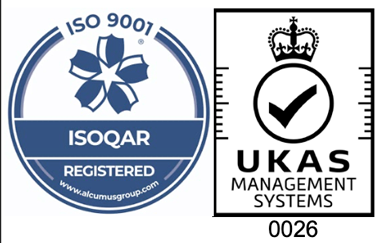8 things to consider when designing a rubber extrusion
30th April, 2021
We work with a range of clients, manufacturing rubber extrusions in various materials.
Our capabilities can create any shape extrusion and we work closely with product designers to produce a great end product. However, there are 8 points of advice that we would give to designers when they’re drawing up a rubber extrusion plan. These hints and tips could make your manufacturing process easier, prevent wastage, and ensure you’re getting the best for your budget.
1. Choosing the right material
One factor that not all designers consider is the different materials that are available in rubber extrusions. Our own rubber extrusions are available in natural rubber, neoprene, Viton, silicone among many more and they all have their own unique properties. Where natural rubber is great for withstanding low temperatures, silicone has a very long service life making it ideal for industrial applications.
2. Designing with sharp corners
Although a 90-degree sharp corner can give an extrusion a sleek look, it can be impractical as it can make the extrusion prone to a leak. To avoid this, you should design with a small radius in the sealing surface design instead of a right angle.
3. Allowing contribution from your supplier
Many people think that the design and manufacture processes are completely separate – but it’s best if they are integrated. Ask for help and advice from your rubber supplier who can use their experience and expertise to assist with the design. Whether it is widths, material type, or finish, it’s always a good idea to get some input.
4. Cutting technique
Some designers come to the supplier and ask for a standard cutting technique, without considering which one would be best for them. There is a range of methods when it comes to rubber and it’s important to query which one could be best for your product.
Take water jet cutting, for example, this is a great option for detailed or non-standard extrusions as the precision nozzle can cut in any direction and the cold-cutting process means there is no risk of melting or tearing.
5. Considering compression
Some designers do not provide suppliers details of the uncompressed shape as well as the compressed shape. It’s important to consider this as, depending on the type of extrusion being created, compression load can vary greatly.
6. Testing prototypes
It is always encouraged to ask for a prototype from your supplier before you order the full run of products. This could be a 3D print (not made out of rubber) or an exact rubber prototype. This allows you to physically hold the product in your hand before lots of them have been made, and check that it is the most suitable size for its proposed use.
7. Considering hollow sections
A cost-effective solution for rubber extrusions could be the product with a hollow section. This maintains the same compression value but uses less material so that the final cost is lower. We often produce fenders and gaskets with hollow sections for our clients and this is a great option for many solutions.
8. Communicating the use of the extrusion
Some designers and companies come to us with their designs without telling us what the final use of the extrusion is. This is key for a manufacturer as we could offer advice on different materials to use or tweaks in the design.
We also might encourage you to create different prototypes and test them out before we create a long run of the product. Instead, as part of your brief, make sure you clearly communicate what the use of the extrusion is to be.
If you want to talk about an upcoming extrusions project, don’t hesitate to get in touch!


